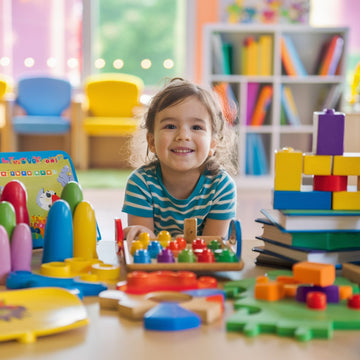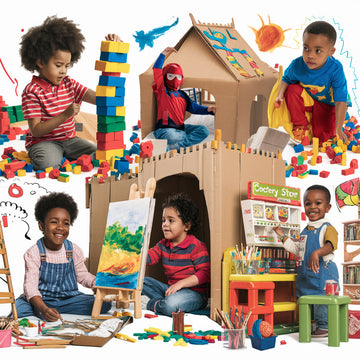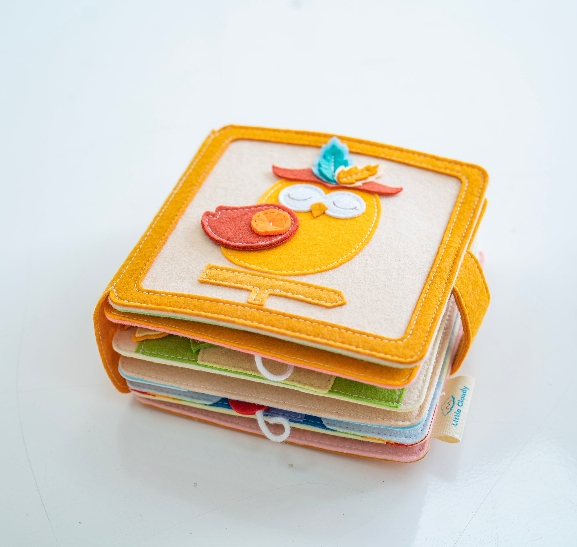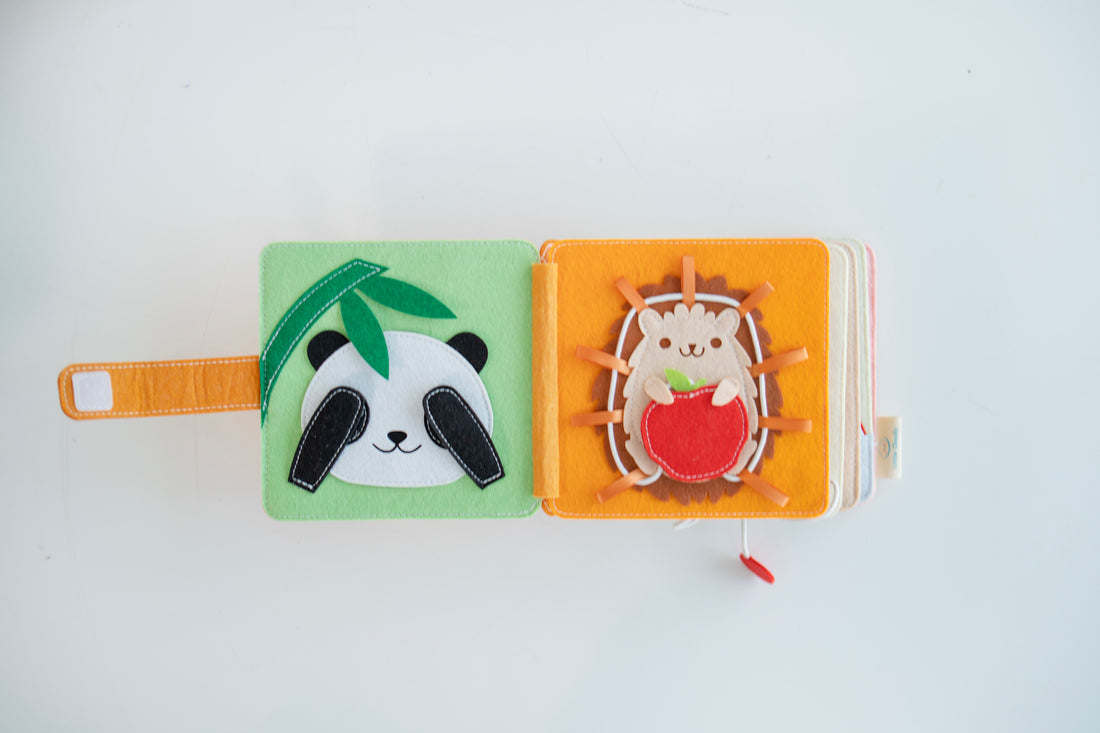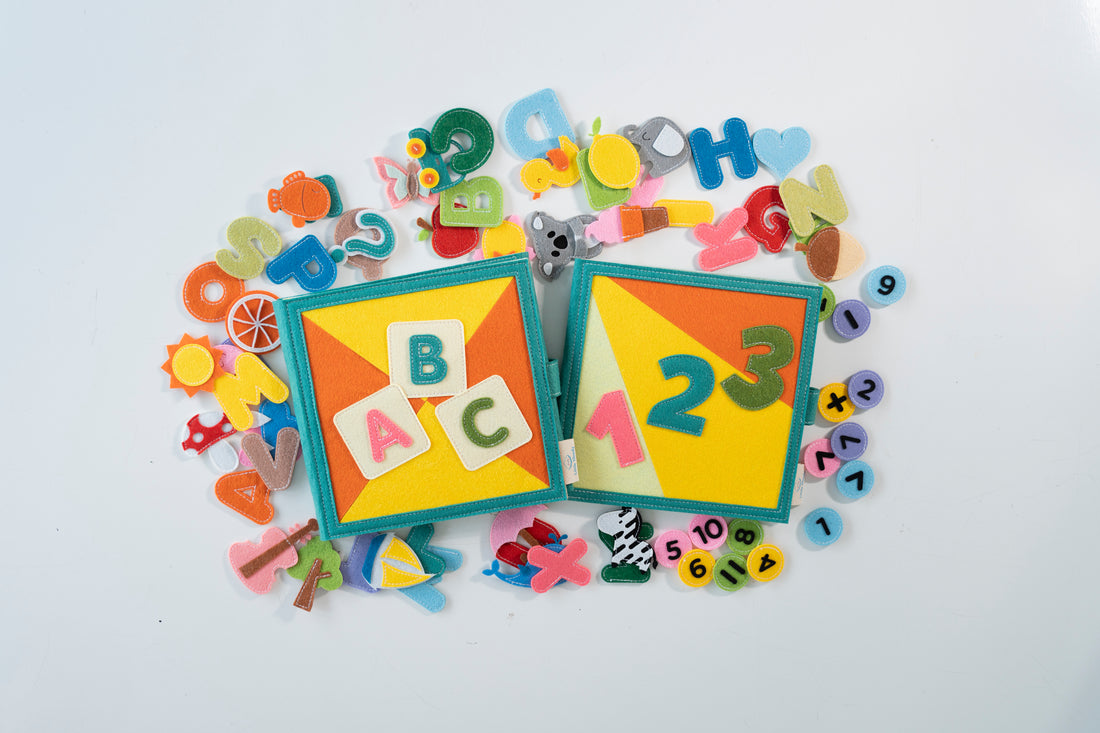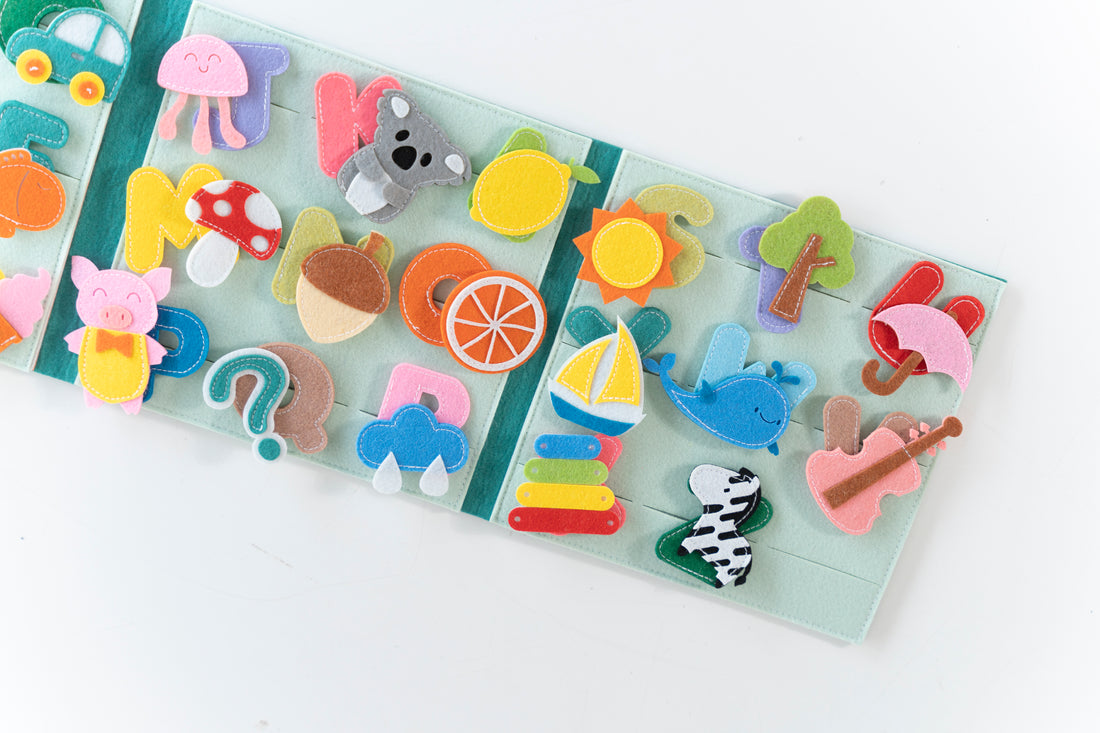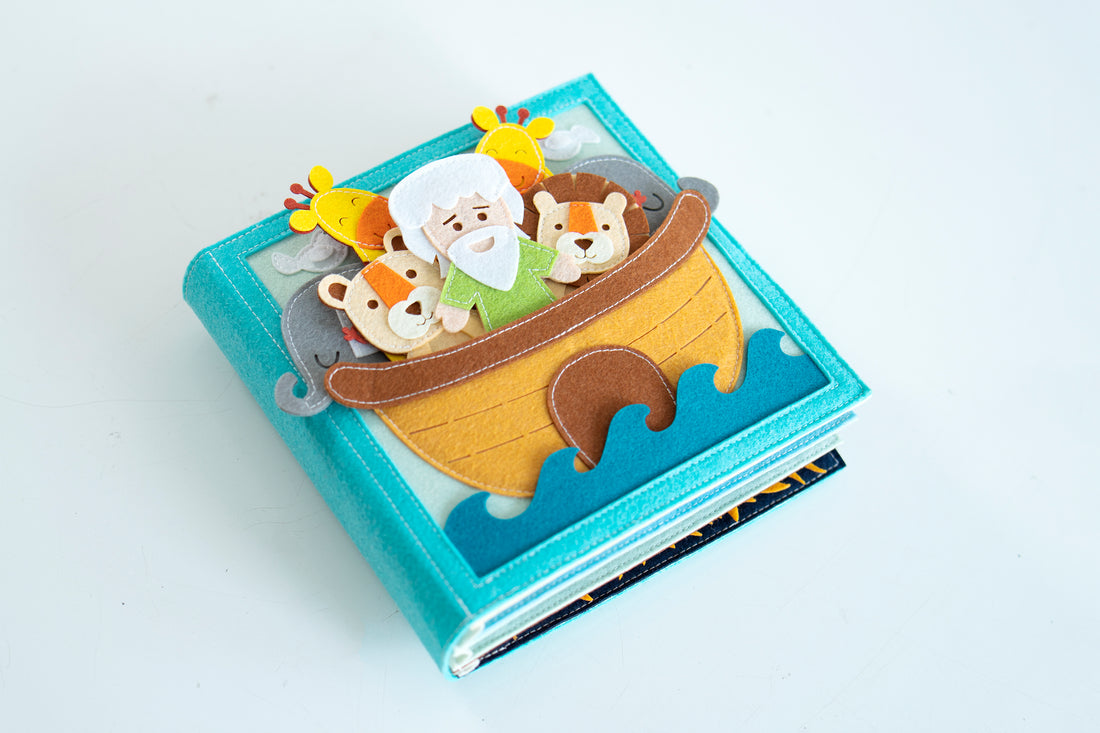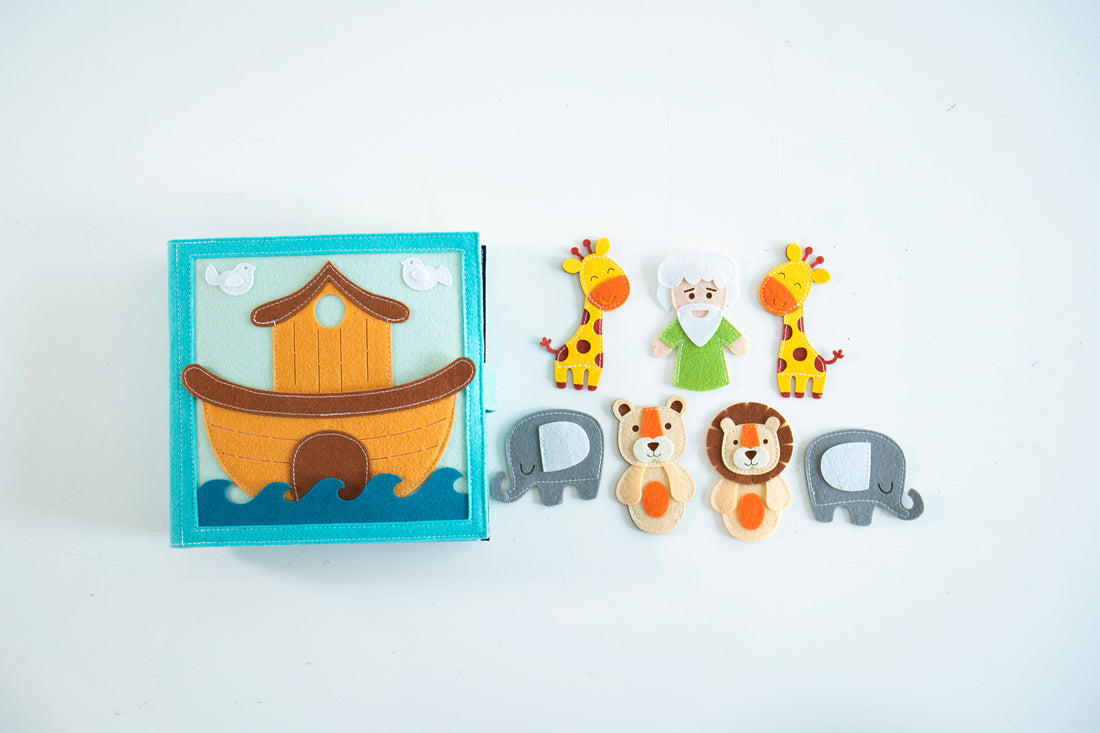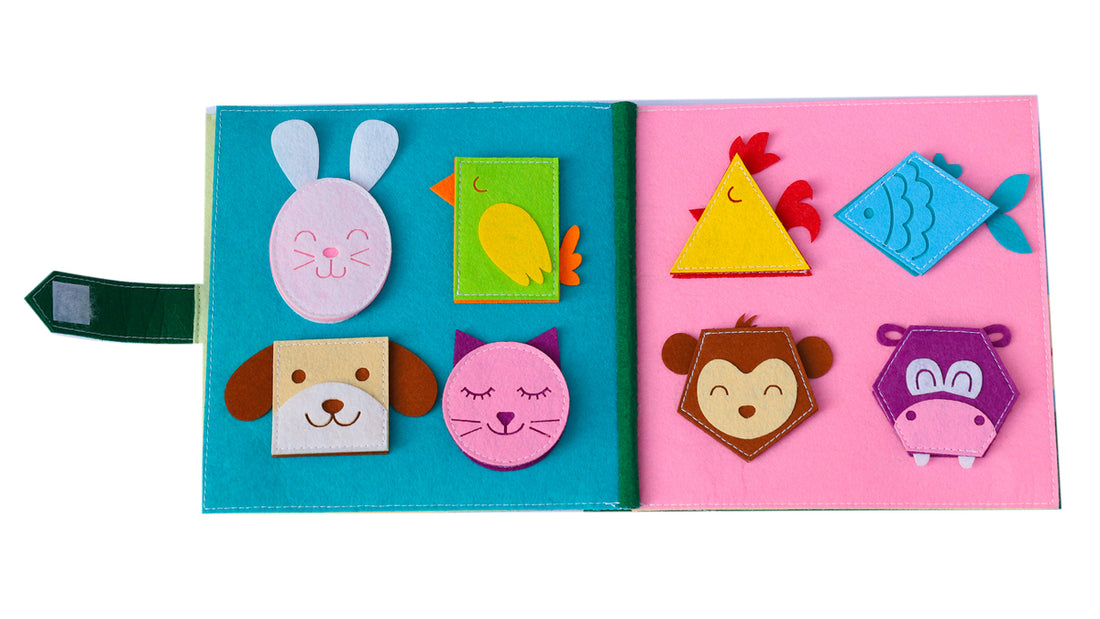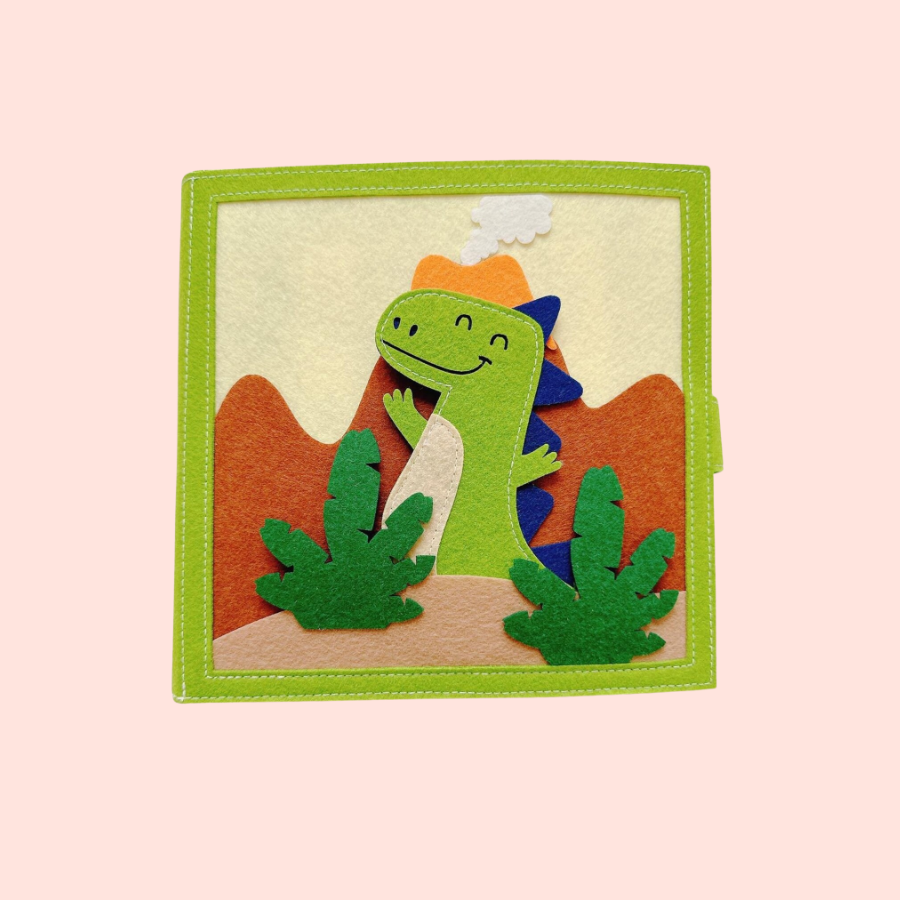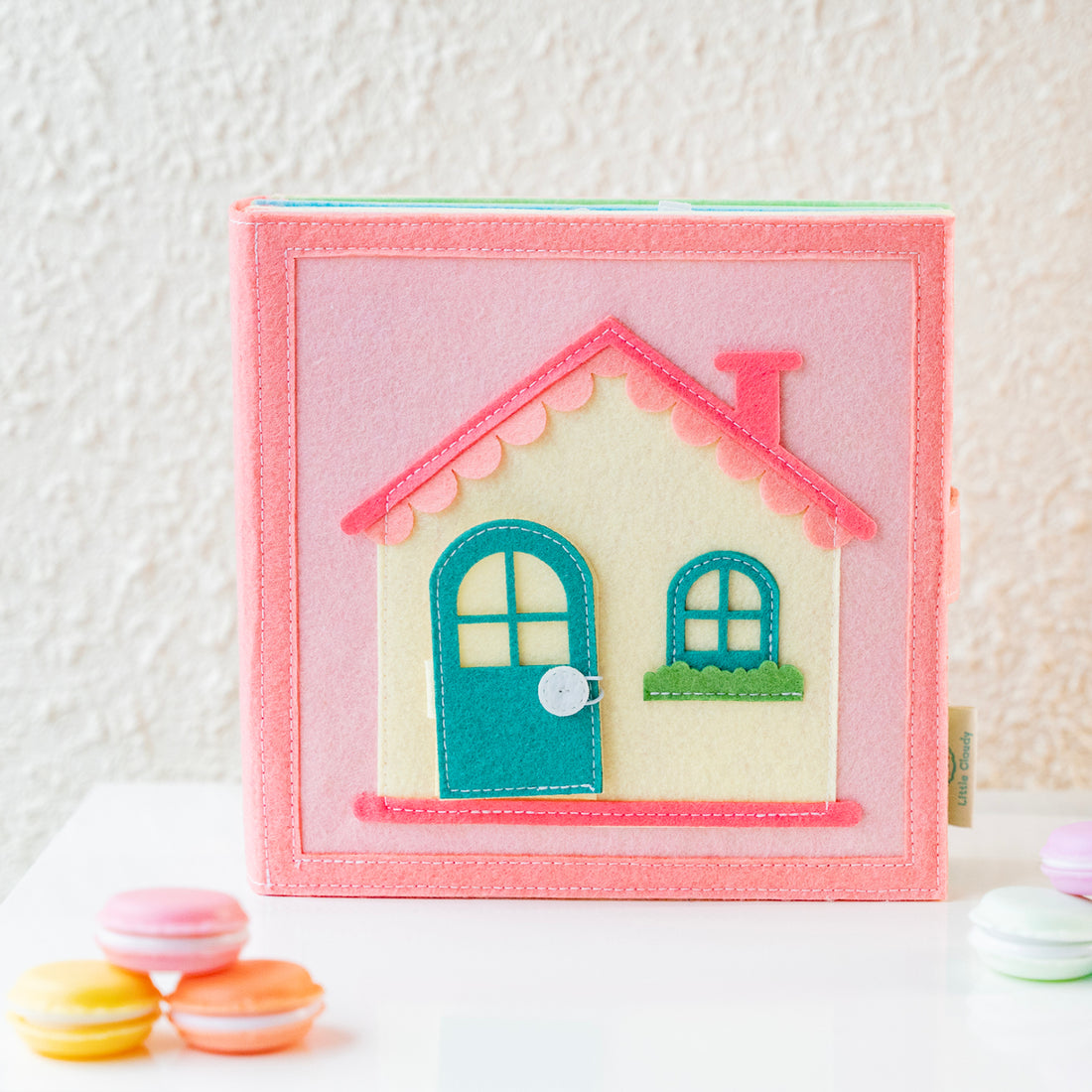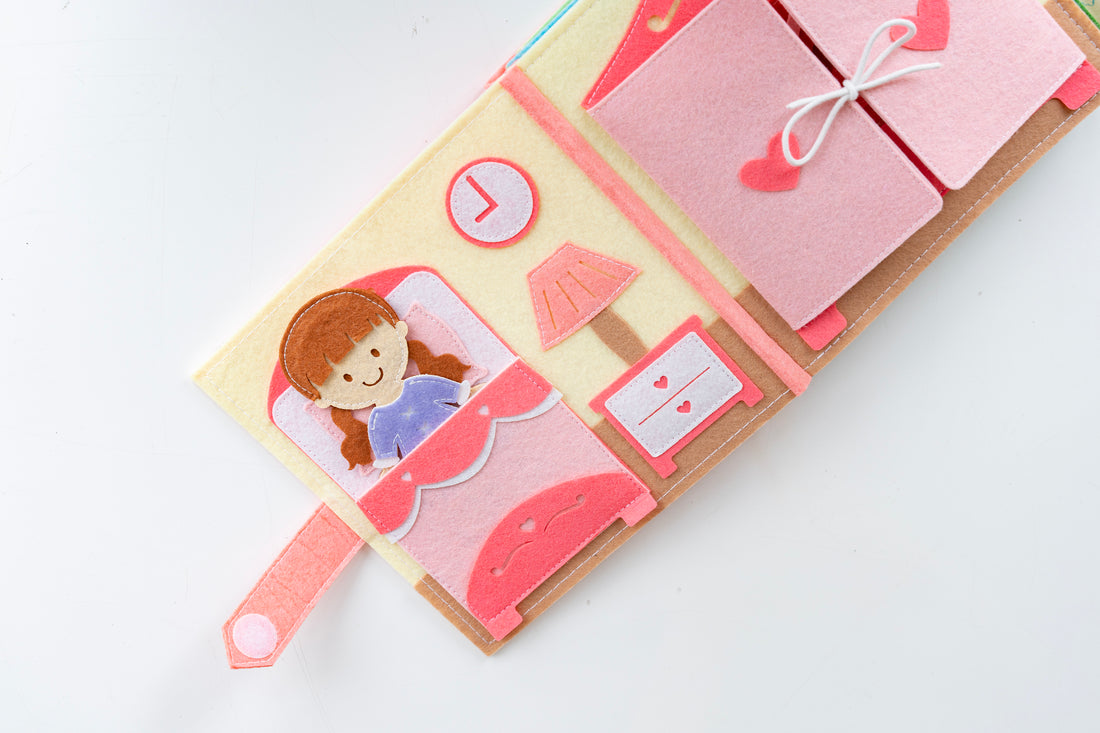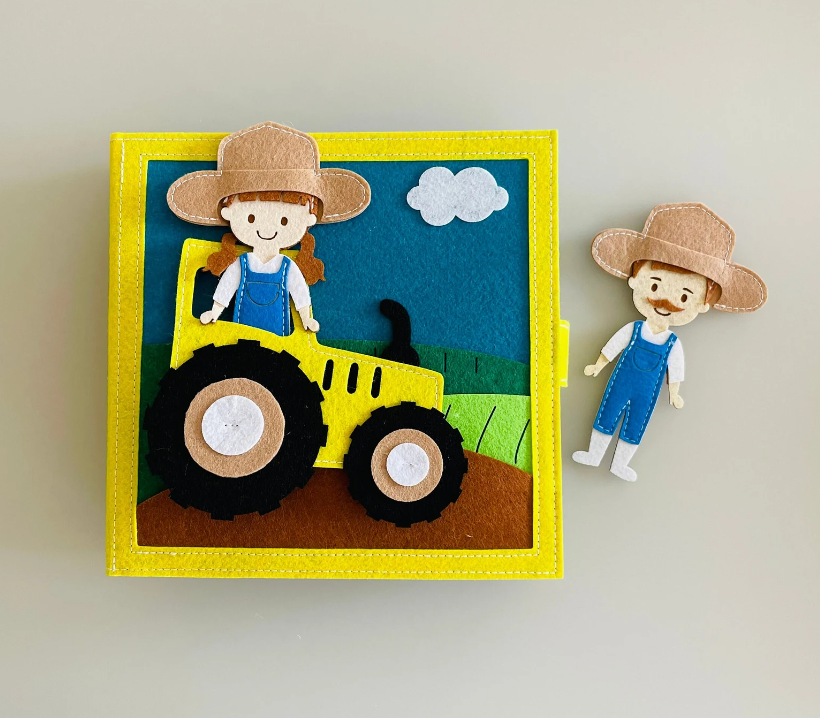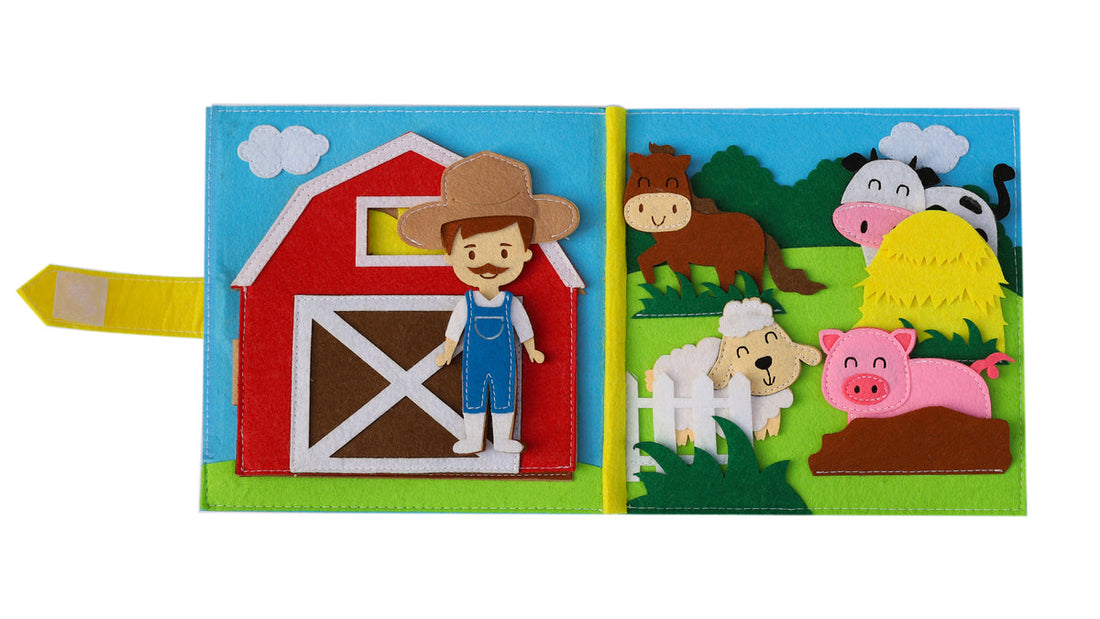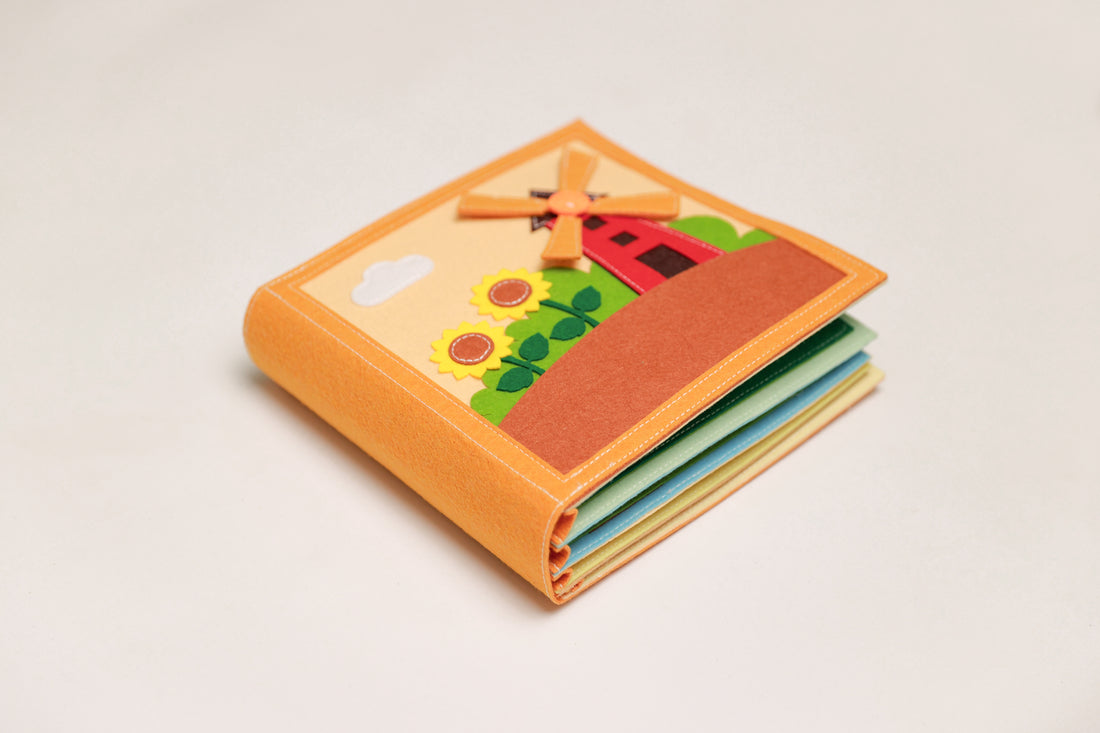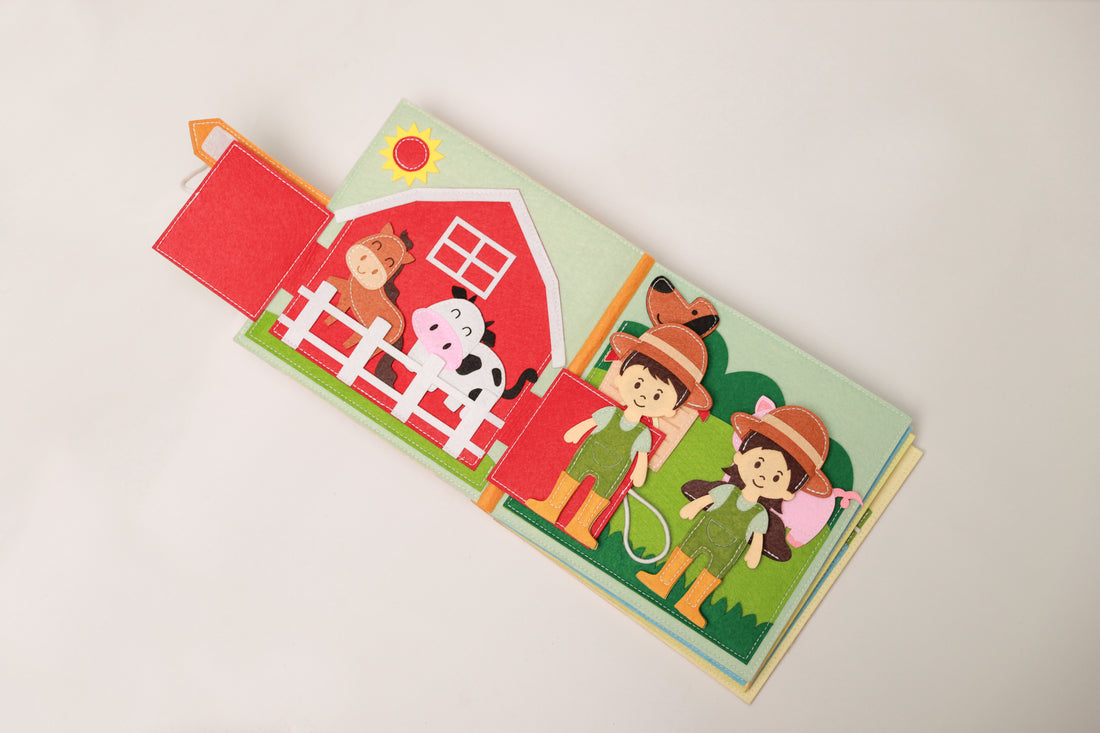Your Child's Bright Start: A Comprehensive Guide to Early Childhood Education Products
The foundation of a successful life is built during the early years. These formative years are crucial for a child's cognitive, social, emotional, and physical development. Early childhood education is the key to unlocking this potential, nurturing young minds with stimulating learning experiences that spark curiosity, creativity, and a love of learning. This comprehensive guide will delve into the world of early childhood education products, offering insights into the why, how, and what of supporting your child's growth and development. It will provide a roadmap for parents, educators, and caregivers, equipping them with the knowledge and resources to create a stimulating learning environment that fosters a strong foundation for a bright future.
The Why of Early Childhood Education:

The Science Behind Early Brain Development
The human brain experiences its most rapid growth during the first few years of life. This period, known as the "critical window," is when synaptic connections, the pathways that allow different parts of the brain to communicate, are formed at an astounding rate.
Here’s a glimpse into the amazing development going on in a child’s brain:
- Birth to 3 years: Rapid growth in the areas of the brain responsible for sensory perception, language, and motor skills.
- 3 to 6 years: Development of higher-order cognitive skills like problem-solving, reasoning, and imagination.
- 6 to 8 years: Continued expansion of the prefrontal cortex, the part of the brain responsible for executive functions such as planning, working memory, and impulse control.
Early childhood education is crucial for supporting this massive brain development:
- Sensory stimulation: High-quality toys and activities provide a rich array of sensory experiences, promoting healthy brain development.
- Language development: Interactive learning environments expose children to language, facilitate conversation, and encourage a love of reading.
- Social-emotional learning: Play-based learning and opportunities for interaction with peers foster social-emotional growth, building empathy, cooperation, and self-regulation skills.
| Age Range | Key Brain Development | Role of Early Childhood Education |
|---|---|---|
| Birth to 3 years | Rapid growth in sensory, language, and motor skills areas | Provide sensory stimulation and opportunities for language development |
| 3 to 6 years | Development of problem-solving, reasoning, and imagination | Encourage creative play, problem-solving activities, and exposure to new concepts |
| 6 to 8 years | Expansion of prefrontal cortex, responsible for executive functions | Facilitate opportunities for planning, working memory, and impulse control development |
Lifelong Impact of Early Learning Experiences
The benefits of early childhood education extend far beyond the early years. Research consistently demonstrates that early learning experiences have a lasting impact on children's lives, leading to:
- Academic Success: Children who participate in high-quality early childhood education programs are more likely to succeed academically. They demonstrate higher levels of literacy, math skills, and overall academic achievement.
- Social and Emotional Wellbeing: Early childhood education fosters social-emotional skills, creating a foundation for healthy relationships, emotional regulation, and resilience. These benefits are vital for success in all aspects of life.
- Economic Advantages: Studies show that early childhood education can have significant positive impacts on a child’s future earning potential. This is partly due to the increased likelihood of higher education attainment and stable careers.
- Healthy Lifestyles: Children who participate in early education programs are more likely to engage in healthy behaviors, including regular exercise, healthy eating, and preventative healthcare.
How to Choose Products that Support Your Child's Growth

Selecting early childhood education products should not be a haphazard endeavor. Instead, it should be a conscious and deliberate process that aligns with your child's individual needs and learning style.
Here are some key factors to consider when choosing products for your child:
- Age-appropriateness: Products should be designed for the specific age and developmental stage of your child.
- Safety: Always prioritize safety when selecting any product. Look for products that meet safety standards and are free from harmful materials.
- Durability: Choose products that are well-made and can withstand the rigors of play. This ensures that they remain safe and functional for extended periods.
- Educational Value: Products should offer opportunities for learning, exploration, and development. Consider the skills and concepts that the product aims to teach.
- Open-Endedness: Encourage your child's imagination and creativity by selecting open-ended toys that allow for multiple uses and interpretations.
Essentials for Playful Learning:

Toys that Spark Curiosity and Creativity
Play is the work of childhood. Through play, children learn and explore the world around them. Toys that spark curiosity and creativity are essential for stimulating the young mind.
Here are some categories of toys that serve this purpose:
- Open-ended Construction Toys: Think building blocks, magnetic tiles, and construction sets that allow children to build, create, and imagine.
- Pretend Play Toys: Dress-up clothes, dolls, play kitchens, and anything that lets children act out roles and scenarios helps develop social skills, language, and dramatic expression.
- Art Supplies: Crayons, markers, paints, and clay provide opportunities for creativity, self-expression, and sensory exploration.
- Science and Nature Kits: Kits that encourage exploration of the natural world can foster a love of science, observation, and critical thinking.
Examples of specific toys:
- Wooden Train Sets: Offer hours of imaginative play and encourage spatial reasoning, fine motor dexterity, and hand-eye coordination.
- Play Dough: Sensory exploration meets creative expression. Children can mold, shape, and create, developing fine motor skills, creativity, and imagination.
- Art Easels: Encourage artistic expression, allow for self-expression, and offer opportunities for children to explore color, textures, and shapes.
Tips for Choosing Toys that Spark Curiosity and Creativity:
- Consider your child’s interests: Choose toys that align with your child's passions and preferences.
- Encourage variety: Offer a diverse range of toys to foster a broad range of skills and interests.
- Don’t be afraid of mess: The best learning experiences often involve a bit of mess! Embrace the opportunity for exploration and discovery.
Building Blocks for Fine Motor Skills and Problem Solving

Developing fine motor skills is a crucial aspect of early childhood development. Fine motor skills involve the precise movements of small muscles, which are essential for tasks like writing, drawing, dressing, and buttoning.
Products that can assist with building fine motor skills and problem-solving include:
- Puzzles: From simple wooden puzzles to more complex jigsaw puzzles, these exercises fine motor skills and enhance visual-spatial reasoning.
- Stacking Toys: Blocks, cups, rings, and other stacking toys encourage hand-eye coordination, problem-solving, and dexterity.
- Beads and Stringing Toys: Threading beads and stringing objects build hand-eye coordination, finger dexterity, and patience.
Here are some tips for encouraging fine motor skills development:
- Provide a variety of tools and options: Offer a range of materials and objects that require different grasping, manipulation, and coordination skills.
- Start with simple activities: Begin with age-appropriate activities that help children master basic coordination skills.
- Offer opportunities for practice: Encourage regular opportunities for children to practice fine motor skills through activities they enjoy.
Examples of products that promote fine motor skills and problem-solving:
- LEGOs: These classic toys provide endless possibilities for creative building, problem-solving, and fine motor development.
- Play Dough Tools: Plungers, cutters, and rollers help children build finger strength, coordination, and dexterity.
- Magnetic Tiles: These versatile tiles offer a fun and engaging way to explore shapes, build structures, and develop fine motor skills.
Open-Ended Materials for Imaginative Play

Open-ended materials provide children with limitless opportunities for imaginative play and creativity. They allow children to explore, discover, and create without the limitations of structured toys.
Here are some examples of open-ended materials that spark imagination and creativity:
- Fabrics: Soft, textured fabrics can be used to create forts, costumes, and imaginative spaces.
- Loose Parts: Small objects like buttons, shells, stones, and sticks can be used for imaginative play, sorting activities, and creative construction.
- Cardboard Boxes: Cardboard boxes become spaceships, castles, stores, and anything a child's imagination can conjure up.
Benefits of Open-Ended Materials:
- Promote creativity and imagination: Open-ended materials allow children to develop their own ideas and stories.
- Encourage problem-solving: Children must figure out how to use materials in various ways, fostering creative problem-solving skills.
- Foster social interaction: Open-ended materials often encourage children to work together, collaborate, and share ideas.
Here are some additional tips for using open-ended materials:
- Set up a designated play area: Create a space in your home or classroom dedicated to open-ended play.
- Encourage exploration: Allow children to experiment with different materials and discover their own creative possibilities.
- Provide a variety of materials: Offer a range of materials to spark imagination, encourage creativity, and cater to different interests.
Literacy Takes Flight:

Books that Nurture a Love of Reading
Early exposure to books and stories is essential for developing a love of reading and fostering language skills.
Here are some types of books that are ideal for young children:
- Board Books: Robust board books are great for babies and toddlers, with bright colors, simple stories, and easy-to-turn pages.
- Picture Books: Illustrated books with engaging storylines and vivid pictures can spark a child's imagination and develop early literacy skills.
- Interactive Books: Books with flaps, pop-ups, or touch-and-feel textures can make reading a more interactive and engaging experience.
Here are some tips for making reading time enjoyable and successful:
- Start early: Introduce books as soon as your child is born.
- Make it a routine: Establish consistent reading time as part of your daily routine.
- Choose diverse books: Expose your child to a range of stories featuring different characters, cultures, and themes.
- Talk about the books: Engage your child in conversations about the story, characters, and illustrations.
- Make it fun: Use different voices, sound effects, and gestures to make reading time exciting.
Interactive Tools for Language Development
Beyond books, numerous tools and activities can enhance language development.
Here are some ideas:
- Sing Songs: Music and singing provide a fun and engaging way to introduce children to language, rhythm, and sounds.
- Tell Stories: Engage children in telling stories through wordless picture books, puppet shows, or creative storytelling games.
- Play with Words: Use rhyming games, word puzzles, and simple vocabulary activities to encourage language exploration.
- Use a “Talking” Toy: Interactive toys that respond to children’s voices and encourage conversation can enhance language development.
Tips for Promoting Language Development:
- Talk to your child: Engage in conversations regularly, even about simple everyday things, to build vocabulary and communication skills.
- Read aloud frequently: Reading aloud exposes children to new vocabulary, sentence structures, and the rhythm of language.
- Use gestures and facial expressions: Demonstrate the meaning of words and phrases through gestures and facial expressions.
- Create a language-rich environment: Surround your child with language-rich materials, such as books, music, and conversations.
Engaging Ways to Introduce Letters and Sounds

Introducing letters and sounds can be fun and engaging for young learners.
Here are some ideas for introducing letter recognition and phonics skills:
- Alphabet Blocks: Classic wooden alphabet blocks offer a hands-on way to learn letters, spell simple words, and build fine motor skills.
- Alphabet Puzzles: Alphabet puzzles help children recognize letter shapes and connect letters to sounds.
- Letter Matching Games: Interactive games that involve matching letters or words can be a fun way to learn letter recognition and phonics skills.
- Phonics Apps: Educational apps designed for young learners can provide engaging phonics lessons, interactive games, and letter recognition activities.
Tips for introducing letters and sounds:
- Start with your child's interests: Use their favorite books, toys, or activities as starting points to teach letters and sounds.
- Use multi-sensory learning: Incorporate various senses, including sight, sound, and touch, when teaching letters and sounds.
- Keep it fun and engaging: Use games, songs, and interactive activities to make learning letters and sounds enjoyable.
STEM Starts Early:

Hands-On Activities for Early Math Skills
Early childhood is an opportune time to build a strong foundation in math.
Here are some hands-on activities that promote understanding of early math concepts:
- Counting Games: Count objects, toys, or fingers to build number recognition and counting skills.
- Sorting Activities: Sort objects by color, shape, size, or other criteria to develop classification and pattern recognition.
- Measurement Activities: Use measuring cups, spoons, or rulers to teach basic measurement concepts.
- Shape Recognition: Explore shapes through blocks, puzzles, or shapesorting games.
Tips for Incorporating Math into Everyday Life:
- Use math language: Talk to your child about numbers, shapes, and patterns throughout the day.
- Incorporate math into play: Use math concepts during play, such as counting blocks or sorting toys.
- Make math relevant: Connect math to real-world scenarios, such as measuring ingredients for baking or counting objects during grocery shopping.
Science Kits for Little Explorers
Science kits open up a world of wonder and discovery for young learners.
Here are a few ideas for science kits that promote early STEM exploration:
- Magnifying Glass Kits: Encourage exploration of the microscopic world with magnifying glasses and insect observation tools.
- Weather Kits: Teach children about weather patterns, precipitation, and weather instruments.
- Grow-Your-Own Kits: Plant seeds and watch them grow. Introduce children to the life cycle of plants and the importance of nature.
- Crystal Growing Kits: Spark curiosity about chemistry and crystal formation.
Tips for Encouraging STEM Exploration:
- Foster curiosity and questioning: Encourage children to ask questions, explore, and experiment.
- Provide hands-on experiences: Offer opportunities for hands-on exploration and discovery through science kits, nature walks, and experiments.
- Make it fun: Use engaging activities, games, and experiments to make science fun and accessible for young learners.
Simple Coding Games for Future Tech Whizzes
Introducing coding concepts at an early age can empower children with valuable computational thinking skills.
Here are some options for engaging coding games designed for young learners:
- Code-a-pillar: This toy robot teaches children basic coding concepts through programming a caterpillar’s movements.
- Osmo Coding Starter Kit: This kit combines physical blocks and a digital interface to introduce coding concepts in a visually engaging way.
- ScratchJr: A visual programming language designed for young children. It provides a fun and engaging way to learn coding concepts through a drag-and-drop interface.
Tips for Introducing Coding Concepts:
- Start with simple concepts: Begin with the basics of sequential instruction, loops, and conditional statements.
- Use engaging activities: Find coding games, apps, or activities that are fun and relatable for young learners.
- Encourage creativity: Allow children to create their own programs and explore different coding concepts.
Nurturing Social-Emotional Smarts:
Dolls and Puppets for Role-Playing and Empathy
Dolls and puppets provide a valuable tool for social-emotional development. Through role-playing, children can explore emotions, practice empathy, and develop social skills.
Here are some ideas for utilizing dolls and puppets for social-emotional growth:
- Role-playing Scenarios: Create pretend scenarios that allow children to practice social skills, such as greeting a new person, sharing a toy, or asking for help.
- Emotional Expression: Use dolls and puppets to express emotions and discuss how different emotions might feel.
- Problem-Solving: Use dolls to act out challenging situations, helping children explore different solutions and perspectives.
Tips for Using Dolls and Puppets for Social-Emotional Learning:
- Foster imagination: Encourage children to use their imagination to create stories and scenarios involving dolls and puppets.
- Ask questions: Ask open-ended questions to prompt children to reflect on emotions, intentions, and behaviors.
- Model empathy: Demonstrate empathy and understanding when interacting with dolls and puppets.
Board Games that Teach Cooperation and Sharing
Board games provide a fun and engaging way to develop social skills, such as cooperation, sharing, and waiting for a turn.
Here are some board game ideas that promote social-emotional learning:
- Cooperative Games: Games where players work together to achieve a common goal foster teamwork and collaboration skills.
- Turn-Taking Games: Games that involve taking turns and following rules enhance patience, listening skills, and understanding boundaries.
- Games that Encourage Empathy: Games that involve role-playing or problem-solving scenarios that highlight empathy and understanding.
Tips for Choosing and Playing Board Games:
- Age-appropriate: Select games appropriate for your child's age and cognitive development.
- Clearly explained rules: Ensure the game rules are simple and straightforward.
- Engaging theme: Choose games with themes that interest your child.
- Positive encouragement: Praise children for effort, cooperation, and good sportsmanship, regardless of the outcome.
Resources for Emotional Expression and Regulation
Supporting children's emotional development also involves providing them with ways to express their feelings and learn to regulate their emotions.
Here are some resources that can help:
- Emotional Expression Journals: Encourage children to write, draw, or create artwork to express their feelings.
- Emotional Regulation Activities: Engage in activities that teach children how to identify, understand, and manage their emotions, such as deep breathing exercises or mindfulness techniques.
- Storybooks About Emotions: Read books that address specific emotions, helping children understand and relate to different feelings.
Tips for Promoting Emotional Regulation:
- Validate emotions: Acknowledge and validate children's feelings, even if you don't agree with them.
- Teach emotional vocabulary: Help children learn words to describe their emotions.
- Practice coping strategies: Help children develop and practice healthy coping strategies, such as talking about their feelings, engaging in physical activity, or engaging with a comfort object.
The Creative Corner:

Art Supplies for Messy Masterpieces
Art provides a powerful outlet for self-expression, creativity, and exploration.
Here are some art supply essentials for young artists:
- Paints: Finger paints, watercolors, and acrylic paints encourage children to experiment with colors, textures, and techniques.
- Clay and Dough: Play dough and modeling clay offer opportunities for sculpting, creating, and fine motor skills development.
- Markers and Crayons: Markers and crayons are versatile tools for drawing, coloring, and exploring different media.
- Paper and Drawing Surfaces: Provide different types of paper, including construction paper, drawing paper, and canvas.
Tips for Encouraging Artistic Expression:
- Provide a dedicated art space: Create a designated area for art activities where children can experiment and get messy.
- Celebrate creativity: Encourage children to express themselves freely and celebrate their artistic creations.
- Expose them to different art forms: Introduce children to various art forms like painting, drawing, sculpting, and crafts.
Musical Instruments for Budding Musicians
Music is a powerful tool for early development and a joyful source of creative expression.
Here are some ideas for musical instruments that can inspire young musicians:
- Drums and Percussion Instruments: Drums, shakers, tambourines, and maracas encourage rhythm, coordination, and musical exploration.
- Ukuleles and Guitars: Simple string instruments can introduce children to the world of music and allow them to create melodies and chords.
- Recorders and Flutes: Wind instruments can develop lung capacity, coordination, and musicality.
Tips for Introducing Music to Children:
- Play music frequently: Create a musical atmosphere for children by playing music they enjoy.
- Sing songs together: Share your love of music by singing songs with your child.
- Expose children to diverse genres: Introduce children to different kinds of music, including classical, folk, jazz, and contemporary.
Building Sets for Imaginative Architects
Building sets are not just toys; they are creative tools that nurture problem-solving, spatial reasoning, and fine motor skills.
Here are some popular building set options:
- LEGOs: These versatile plastic blocks offer endless possibilities for building, creating, and problem-solving.
- Mega Blocks: Larger building blocks are ideal for younger children, promoting early construction skills and hand-eye coordination.
- Magnetic Tiles: Magnetic tiles offer a fun and interactive way to build structures and explore shapes.
Find Books for Early Childhood Education
https://little-cloudy.com/collections/preschooler-busy-books-2-to-5-year-old

